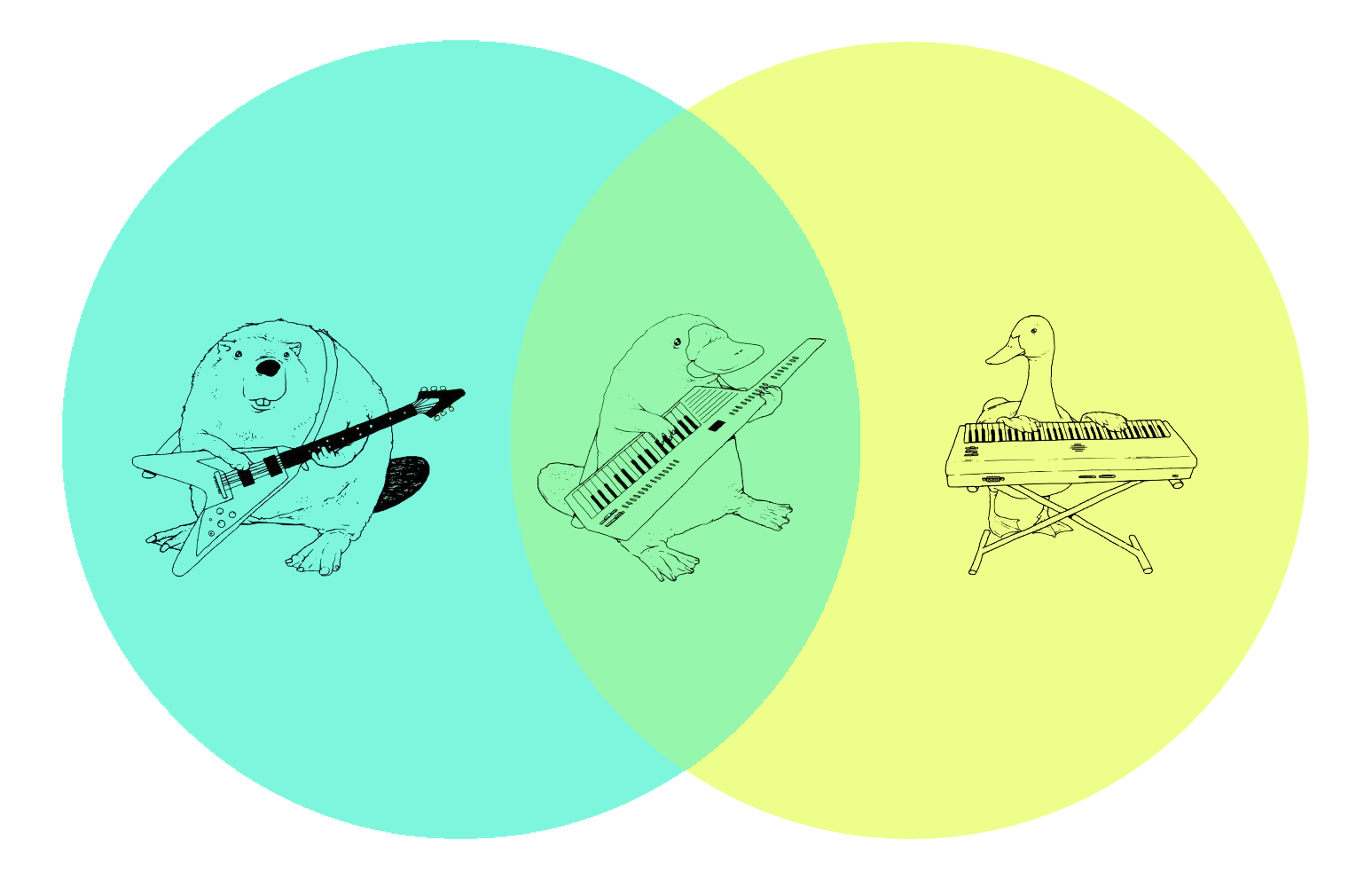Set Theory Exercises
David Lu
July 25, 2018

Sets
- Which of these sets are equal?
{}, {}, {}, {}
- List the elements of each set where = {}.
(a) { | }
(b) { | is even, }
- Prove that
(The complement of a set , = { | and })
- Give some example sets that make the following statements true:
(a) and
(b) $ and
- Prove that (Set distributivity law)
- Determine the validity of the following argument, using a Venn diagram:
- All my friends are musicians.
- Link is my friend.
- None of my neighbors are musicians.
Therefore Link is not my neighbor.
- Which of the following sets are identical?
is odd,
- Find the power set of
Relations
Some examples:
If and , then:
A binary relation from to is a subset of
If , then we can write or .
The former is typically preferred, since it allows us an easy convention for notating relationships with >2 relata, e.g. , and to notate the negation , using our logical vocabulary.
The inverse relation is the relation from to which consists of the ordered pairs, which, when reversed, belong to . In symbolic notation:
- Relations can be depicted by graphs. Draw a graph for the following relation .
- What does the inverse look like?
- Relations can also be represented as a table or two dimensional array. What would that look like? Construct one for .
Relation Composition or product:
Suppose that we have three sets , , and , a relation defined from to , and a relation defined from to . We can define a composition of and , written (but sometimes ), as follows. If is an element of and is an element of , then iff there exists some element in such that and . So we have a relation from to iff is related to and is related to .
- Let = {1, 2, 3, 4}, = {(1, 2), (1, 2), (2, 4), (3, 2)} ----- using () as angle brackets
and = {(1, 4), (1, 3), (2, 3), (3, 1), (4, 1)}
Find .
Relations have many interesting properties. Some that we’re interested in include: reflexivity, symmetry, antisymmetry, transitivity, equivalence, and partial and total order.
-
Construct or name an example for each property.
-
Consider the following relations on the set = {1, 2, 3}.
= {(1, 1), (1, 2), (1, 3), (3, 3)}
= {(1, 1), (1, 2), (2, 1), (2, 2), (3, 3)}
= {(1, 1), (1, 2), (2, 2), (2, 3)}
= empty relation
= universal relation on
Determine whether or not each of the relations is (a) reflexive, (b) symmetric, © transitive, and (d) antisymmetric.
- Let be any collection of sets. Is the subset relation, , a partial order on ?
Unfamiliar notation: generalized set operation:
The transitive closure of a binary relation on set is the smallest relation on that contains and is transitive. If is transitive, then is the transitive closure.